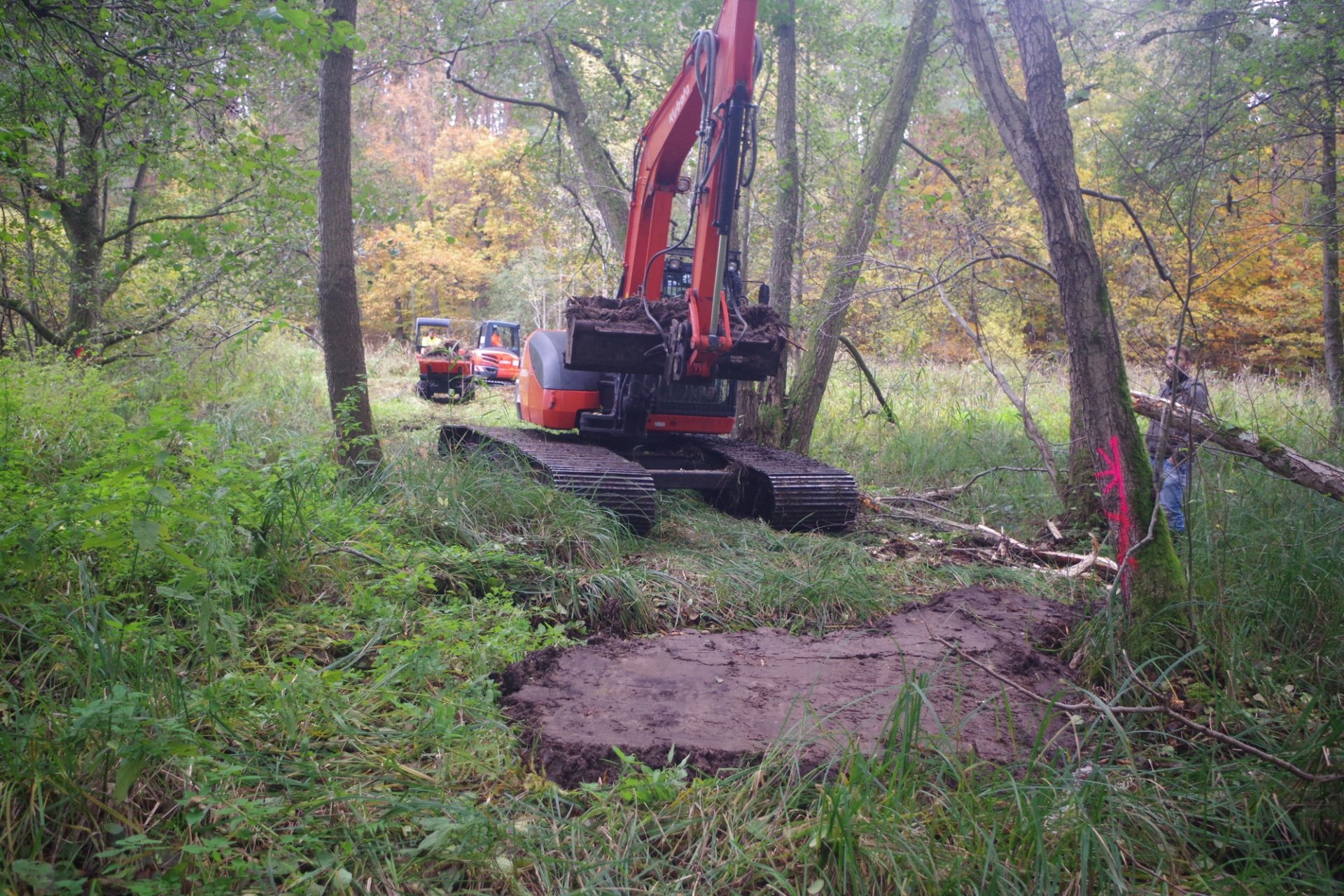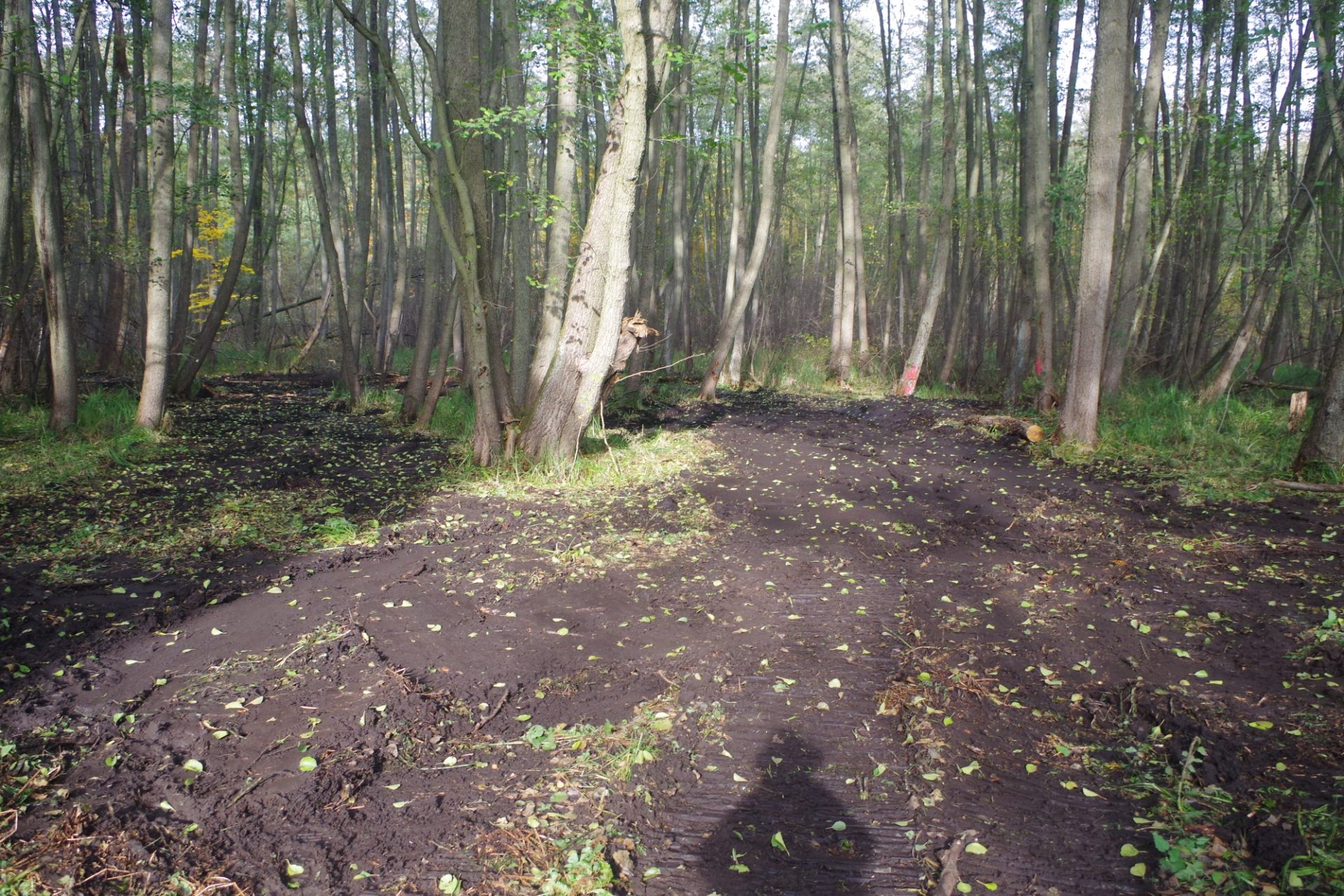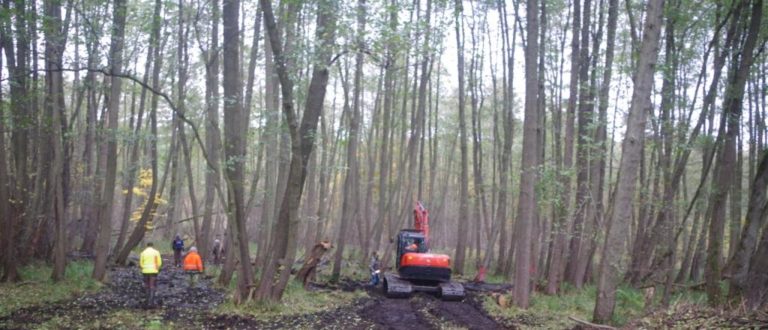After a long planning and approval phase, finally on October 12th the peatland restoration measures in the German project site Biesenthaler Becken started.
The contracted company started on the smallest of the three peatland sites to be restored – the kettlehole mire “Moor birch forest” which covers only 0.6 ha. Across this small peatland runs a central drainage ditch, which according to historical maps already existed at the beginning of the 20th century. It was created with the aim of penetrating the layer sealing the kettlehole mire in order to drain the water into the mineral subsoil. As a result, the ground water level dropped to below 0.8m, the peat layers increasingly decomposed and the typical peatland vegetation decreased sharply.
In order to keep more of the water from the nearly 2 ha large catchment area in the “Moor birch forest”, the ends of the ditch were blocked with clay seals reaching down to a depth of 2 m. As an additional measure to improve the hydrological situation here, in winter 2020/21 a so-called forest conversion in the mentioned catchment area takes place. This means that the coverage of the dominant non-site typical pine is reduced and the growth of deciduous species like beech and oak is supported by planting and placing fences against deer browsing.
For example, while beneath beeches about 20% of the annual precipitation benefits the groundwater (and thus also the peatland), due to their smooth bark and lack of foliage in winter, the rate of groundwater formation beneath conifers such as pines is insignificant.
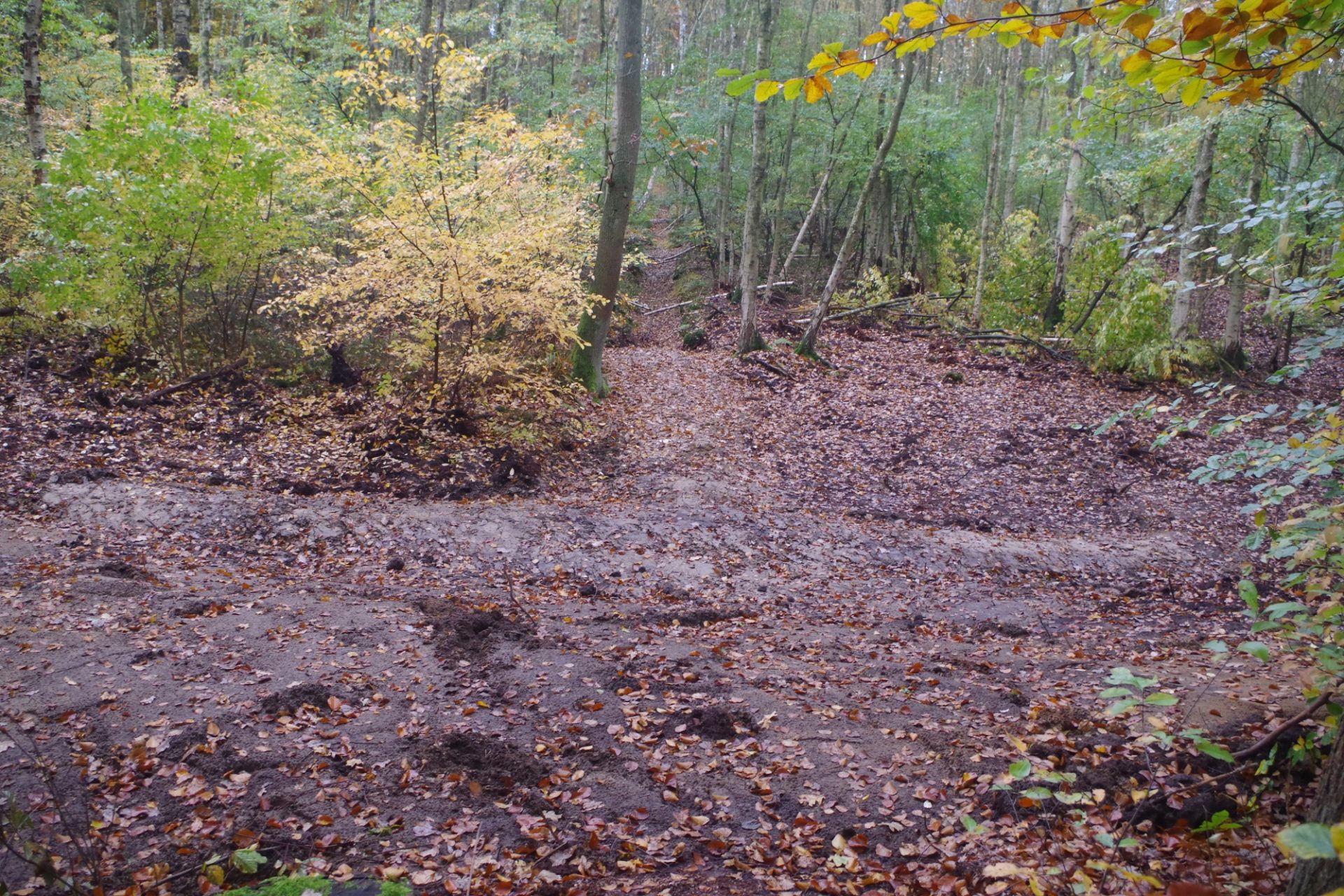
By October 23, the construction work in the second restoration area at the lower course of the “Plötzenseefließ” was already completed. This artificial water body, which runs in straight lines, drained over a length of approx. 260 m the 3.5 ha large terrestrialisation fen, characterized by an alder carr, on the banks of the lake Hellsee. This led to water levels of up to over 60 cm below surface during the summer months. A total of five ditch blockings, each 10 m long, were installed in the water body. For the two upper ones, wood and delivered clay were used, while for the lower three ditch blockings, peat from shallow peat digging in the surroundings was worked in between wooden trunks. These ditch blockings now ensure that water levels close to the peatland surface can again be reached. This should also stop peat decomposition and potentially allow peat growth again in the future.
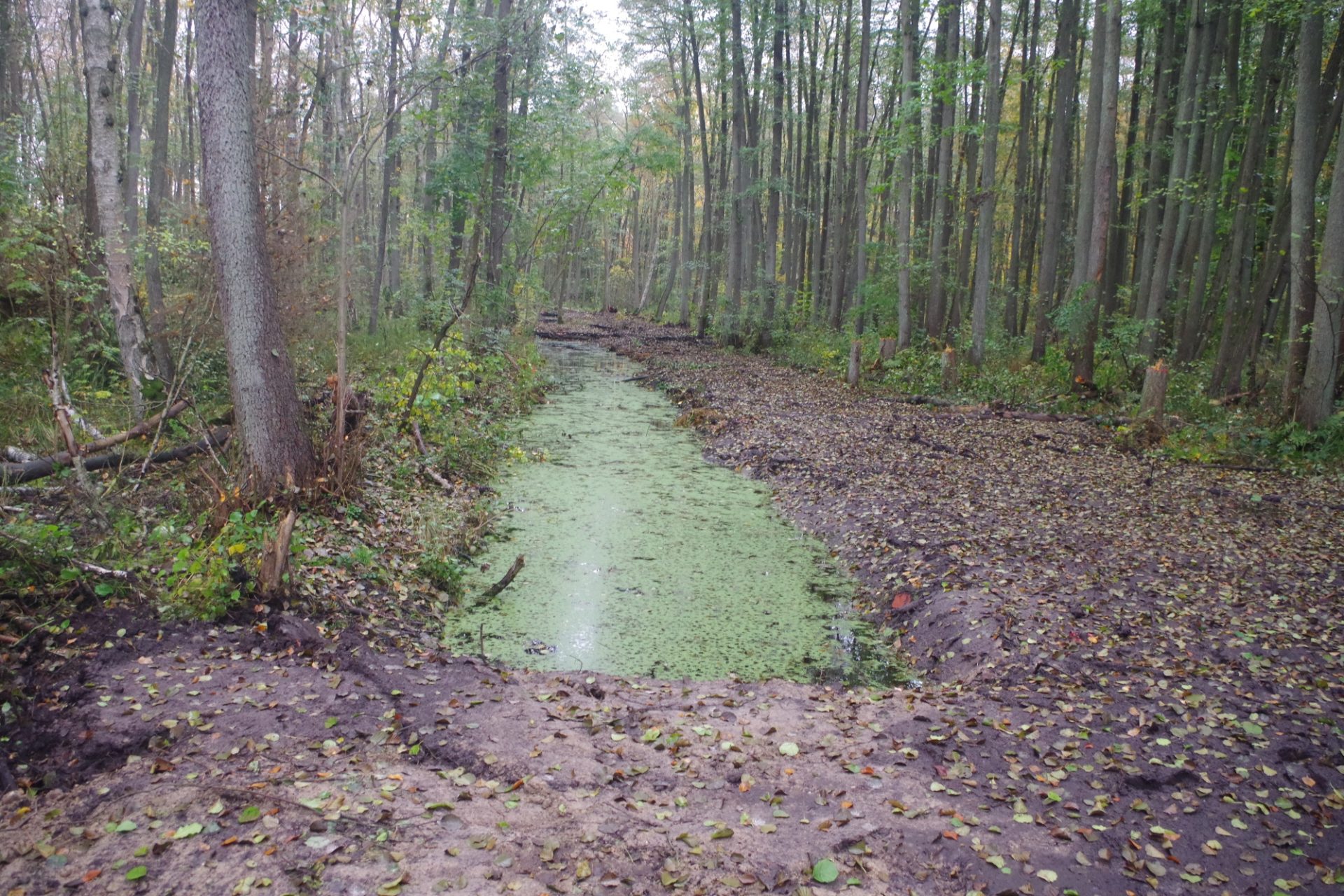
Due to the COVID-19 pandemic, the construction progress of the third and largest site (with over 10 ha), the peatland at the lower reaches of the small river “Pfauenfließ” was delayed. In this area the construction work began on October 26 with the sealing of ditches at the margins of the peatland.
In total, NABU plans to fill the numerous drainage ditches at around 40 spots with peat blockings. Furthermore, for raising the water level in the natural stream “Pflauenfließ” near to its mouth into the river Finow a 50 m river bottom slide will be constructed from peat, wood and mineral soil. From there, upstream structuring the river with tree trunks, peat and other plant material will reduce the width of the stream and therefore cause higher water levels. We hope to conclude the restoration works still in 2020.
